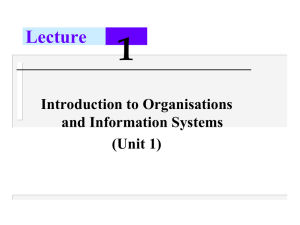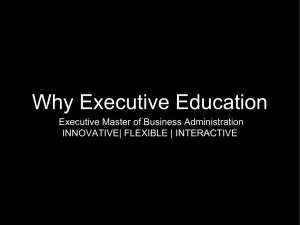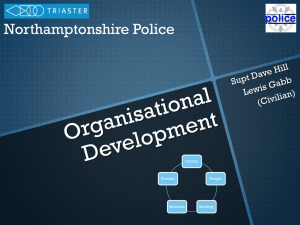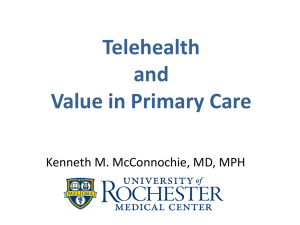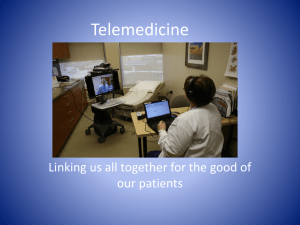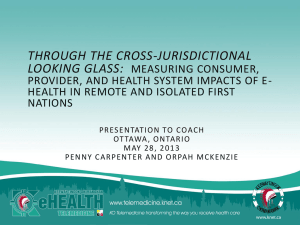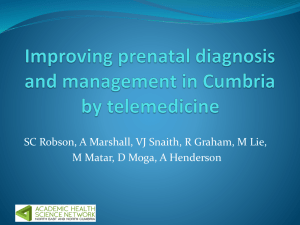- MAST model info
advertisement
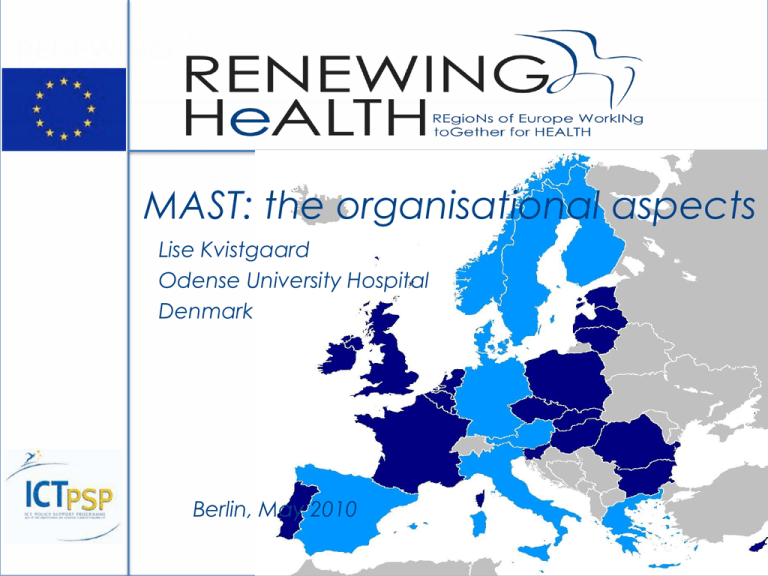
MAST: the organisational aspects Lise Kvistgaard Odense University Hospital Denmark Berlin, May 2010 What is an organisation? • • • • A consciously coordinated social unity With clear boundaries Targets certain goals Members have defined roles Level 1 Level 2 Level 2 Level 3 Level 3 Level 3 Level 3 10/04/2015 2 Although some large health organisations may look like this… Characteristics of health care organisations • High level of complexity • Dynamic environment - many activities at the same time • Interdependence between units or people on a number of levels • Many professions work together • Often difficult to single out the result of one organisational change for measuring, • Many processes occur simultaneously Telemedicine in health care organisations Important decision: should the new technology be adapted to the organisation, or should the organisation be adapted to the technology? • Impact on organisations at the structural level • Impact on work flow – Impact on distribution of work between professions – Impact on distribution of work between units in an organisation – Impact on distribution of work between organisations – Impact on geographical distribution of health care services • Impact on organisations at the cultural level Implementing new technology …into health care systems: a 3 piece puzzle in which the pieces continuously need to adjust to each other in order to obtain optimum fit: • Clinical work • Organisation of health care • The technology – Should organisational culture be considered the fourth piece? How to evaluate organisational aspects of telemedicine Topics - an overview • • • • Process Structure Management Culture Process: topics and outcomes (1) • Workflow – – – – – Number of patients treated Number of procedures performed Time spent on each stage in the work flow Referral times Bed days • Staff, training and resources – Changes in work distribution between professions (task shifting) – Changes in staff requirement – Time spent on training – Changes in hours spent on each stage in the work flow Process: topics and outcomes (2) • Interaction and communication – – – – – Amount of electronic communication Changes in information and reporting systems Changes in face to face patient communications Changes in the way medical staff communicate Changes in the way medical staff cooperate • Methods for data collection: – – – – – – systematic literature review Interviews (single or focus groups) questionnaires observation surveys statistical studies Structure: topics and outcomes • Spread of technology, – – – – – Changes in the number of units offering treatment Number of organisational units set up especially for telemedicine Changes in organisation of generalist and specialist tasks Changes in geographical spread Time spent on travel, staff or patients • Economy (this topic was covered in the previous presentation) Methods for data collection: – systematic literature review – questionnaires – surveys Management: Topics and outcomes (1) • Management style – Changes in leadership style – Changes in managers´ span of control Level 1 Level 2 Level 3 Level 2 Level 3 Level 3 Level 3 Management: Topics and outcomes (2) • -Or a different structure? Methods for data collection: – – – – systematic literature review Questionnaires Interviews surveys Culture: topics and outcomes • Attitude and culture – Staff attitudes towards telemedicine applications – Staff experience with telemedicine applications – Impact on organisational culture • Instruments for measuring: – Interviews (single or focus groups) – surveys – observation Data collection on organisational aspects • Frequently situation specific data are needed • Often primary studies must be carried out • Existing studies are often based on very small samples • The evaluation of the organisational aspects of a particular telemedicine device may require various methods: – descriptions (of structure, processes and workflow) – quantitative methods (for instance changes in number of bed days and changes in referral times) – qualitative methods (attitudes and experience) Description of organisational aspects of telemedicine in the literature1 Important: Literature review indicates no consensus regarding the use of particular outcome measures or data collection instruments • Generally, evaluations of organisation aspects of implementing new medical technology are few and far between • For interventions applying telemedicine solutions, descriptions are sometimes found, mostly when the application affects the organisation at a structural level Examples of relevant outcome measures in the existing literature • Referral times • Length of stay Description of organisational aspects of telemedicine in the literature (2) Recommendations based on the literary review • It is useful to identify stages in the workflow process and explore the time needed to complete them • Cost estimation can be made on the basis of this • Hospital stay data (bed days, referral times, etc) are widely used in assessing outcomes Example: the organisational aspect • Description of the organisational change – Method: interview • Description of the advantages and disadvantages of the new organisation – Method: interviews with staff and management, questionnaire • Task shifting and time spent – Method: observation and registration, collection and analysis of hospital data • Changes in patient flow – Method: collect and analyze hospital data Hints for starting an assessment of a telemedicine application • The implementation of the telemedicine solutions will often affect organisational structures • Although a systematic literature review should be carried out, don't be too optimistic about the results • Be prepared to carry out your own primary studies on the organisational aspects • Be pragmatic and consider which data are relevant as basis for decision making in each case Questions?




